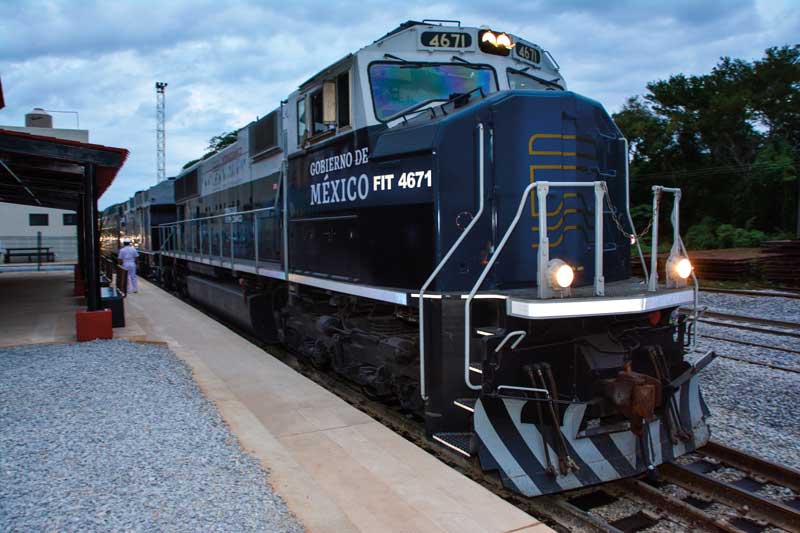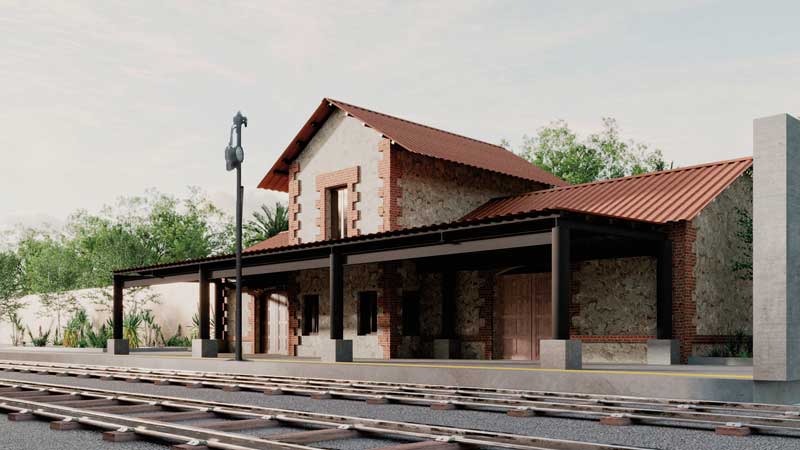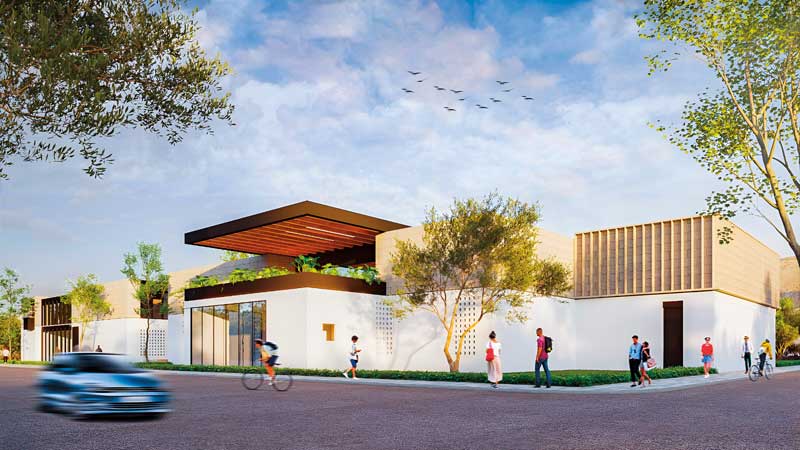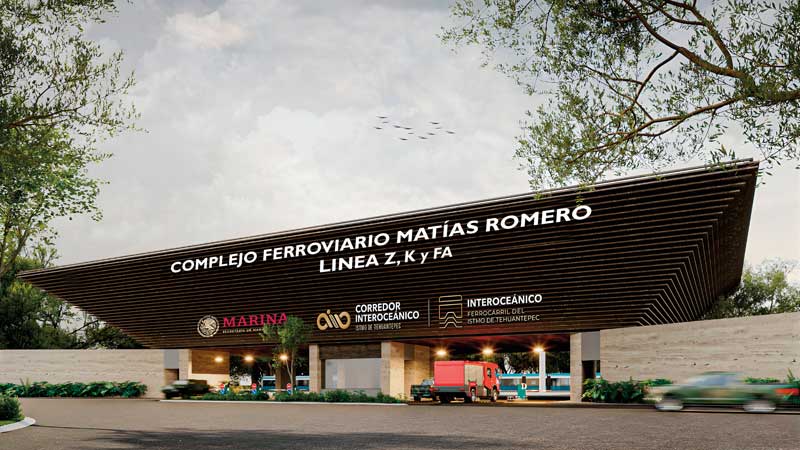Mexico is the center of the world because it is geographically connected to the United States and Canada, with Central and South America, and on one side has access to Asia and on the other to Europe and Africa through an ocean, all through the Interoceanic Corridor.
This underscores the logistical importance of the project, coupled with the industrial development incorporated through Development Hubs. Mexico is well located and organized to be a reference in the way of doing business because foreign investors see the country with great confidence and continue to arrive in various productive sectors, as evidenced by annual figures of Foreign Direct Investment. Currently, the country is experiencing a historic, unique moment. On the one hand, the nearshoring phenomenon due to the relocation of supply chains, and on the other, the Interoceanic Corridor which is beginning its operation. Bringing these two forces together will give enormous potential to the local economy. Inland, the Interoceanic Corridor is a project that will unite Mexico.
Today, many analysts consider that there are two Mexicos: one is the region of the central-north, which is developed, with a good economic dynamic; but another in the southeast is extremely lagging and forgotten by many.
Under this consideration, the CIIT will benefit the country to unite, so that it becomes one Mexico. It will be a project that will transform the country and unify the nation by promoting the development of the southern region and balancing development over time.
On the external front, it is a strategic project that will benefit various nations, primarily the United States, due to bottlenecks in global supply chains, both due to nearshoring and the flow of goods, especially now that the Panama Canal is facing a problem due to water scarcity, which gives us a competitive advantage.
VIRTUOUS CIRCLE
The analysts believe that the CIIT is a project that will generate a virtuous circle in the economy of the region, where public investment has laid the groundwork to attract private investment, both national and international. This will lead to the establishment of companies that will create numerous job opportunities, which in turn will result in increased consumption, economic dynamism, and social improvement.
Regardless of the long history of this infrastructure project, spanning over 100 years, it is an iconic and viable project from all perspectives, not just that of the President of the Republic. It is the only infrastructure project of the current federal administration that has not faced political rejection; even the opposition is in favor, or at least does not openly oppose it.
It is a comprehensive project from the standpoint of intermodal logistics, involving ports, railways, roads, airports, and industrial development. However, it is an integral development because it considers beyond the economic aspect, prioritizing social development as well. Furthermore, this is a project that was prepared considering all necessary aspects.
It wasn't solely focused on the railway; it was modernized and expanded with the foresight that this would create greater demand for ports. Therefore, the ports of Salina Cruz and Coatzacoalcos are also being expanded and modernized, anticipating the attraction of larger ships by increasing the ocean depth in both locations.
Additionally, efforts are being made to improve the road infrastructure to expand land access routes. Viewed comprehensively, infrastructure was created from top to bottom to ensure its proper functioning. Therefore, we must see the project as a fully integrated whole. There can't be economic development without social development, and there won't be social development without economic development. Additionally, the best complement to the CIIT is the Welfare Development Poles (Podebis), which will contribute to the industrialization of Oaxaca and Veracruz.
This will attract national and international private investment, generate employment, and consequently spur real estate development in the region. This is precisely a significant differentiator compared to the Panama Canal because it will enable manufacturing, not just the transportation of goods from one ocean to another. Instead, raw materials or components arriving from other parts of the world to Mexico will be transformed in industrial parks into finished products that can be exported to North America. There is a great opportunity here for nearshoring to have direct benefits to the southeast of the country, not just in the North and Bajío regions. The process of receiving goods, transforming them, and then sending a finished product to other markets is entirely different from what is done at the Panama Canal.
WITHOUT MAJOR PUBLIC PROMOTION
There is a perception that the CIIT has been the least promoted project by the federal government, and this is likely because even the opposition agrees with it. Unlike the Mayan Train, the Dos Bocas Refinery, or the Felipe Ángeles International Airport, the CIIT has been separate from political issues. It would be difficult to imagine anyone opposing this monumental work. Therefore, President Andrés Manuel López Obrador put a lot of effort into it, making frequent visits to supervise the works. Analysts affirm that he invested a lot of time so that by the end of his administration, it would be an operational project. Regardless of who governs the next administration, it will be up to the Private Initiative and the three levels of government to ensure its success. Politically, the best part is that, regardless of who leads the next federal administration, legal continuity will be ensured. It is a project that offers certainty, with the most important foundations already laid. However, it will be up to the Mexican people to continue it, meaning the private industry, investors, developers, and all those involved in the various projects that make up this monumental work. Surveys conducted by various companies among the population of Oaxaca and Veracruz show that people see development with the project and perceive it as a benefit. This is a significant factor because working without society's support would be impossible.
TRANSFORMATIVE PROJECT UNDERWAY
The CIIT is already operational, with the ports in operation and undergoing expansion and modernization. Trains are already running, and a structure has been created that will synergize with the Mayan Train.
Linking the railway line of the Interoceanic Corridor (Z) with the Mayan Train, through line FA which reaches Palenque, and another line, K, which reaches Puerto Chiapas in Tapachula, also creates an extremely interesting circle of connectivity and economy. We must look beyond, as the aim is to unite the nation through the railway.
In general, both the CIIT and the Mayan Train have generated momentum in the railway sector, and it is expected that there will be continuity with projects in different areas of the country. It is important to remember that since November 20, 2023, it was published in the Official Gazette of the Federation, the Decree declaring the provision of the public passenger rail transport service in the Mexican Railway System as a priority area for national development.
Based on this, the Ministry of Infrastructure, Communications, and Transportation (SICT) is studying five projects that appear to be viable:
- Buenavista-Tula-Querétaro-León-Aguascalientes Train
- Manzanillo-Colima-Guadalajara-Irapuato Train
- Mexico City-San Luis Potosí-Monterrey-Nuevo Laredo Train
- Mexico City-Querétaro-Guadalajara-Tepic-Mazatlán-Nogales Train
- Aguascalientes-Chihuahua-Ciudad Juárez Train
While it is considered globally that passenger trains are not profitable businesses and often require subsidies, the significant aspect lies in the economic and social impact they generate in the areas influenced by railway routes. This impact extends from the stations themselves, which can be transformed into development hubs, to involving the population through housing and commercial activities that can be stimulated at each terminal. Additionally, the value of enabling the population to board a train and commute to work is significant. Simultaneously, it becomes a tourism-related issue throughout the country.
We must view the railway as Mexico's arteries because through the multiple connections, one can traverse the country with a high level of security.
PROJECT WITH DISCIPLINE
One of the less visible elements in the evolution of the CIIT is that since it was entrusted to an institution like the Mexican Navy, discipline has been injected into it, which is a characteristic of said institution.
This same discipline has been transmitted to the private companies participating in the project, through adherence to the guidelines provided for the works.
The same institution, due to its structure, regardless of who leads the next federal government, will ensure proper continuity, making it a non-issue to leave unfinished projects.
Therefore, the chain of command established in the project, from ports to stations and railway lines, will ensure that the works continue until completion.
Text:Ricardo Vázquez
Photo: Unidad de Comunicación Social de la Secretaría de Marina / ANDY TRAVEL /







